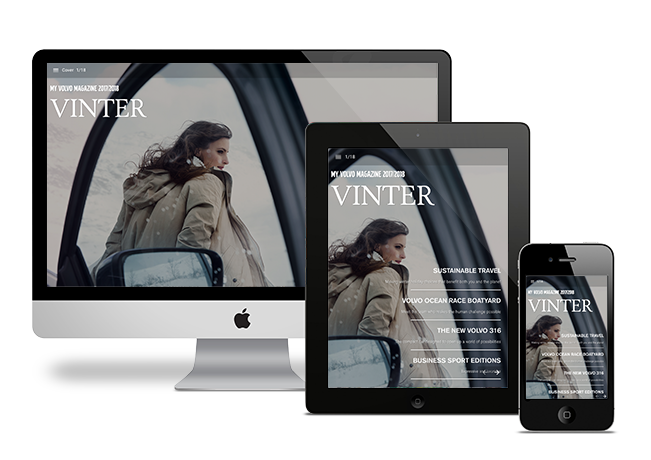Any salesperson’s worst fear is having a potential client fall asleep during a meeting or leave confused and unsure about their product. No matter how excellent your presentation skills may be, having an equally impressive sales deck that will help you successfully communicate your company’s offerings to your clients is essential.
This post will give you an overview of what to include in a deck to grab your prospective customer’s attention, educate them about your product, and persuade them to buy it.
What are sales decks?
Sales decks are presentations that visually demonstrate the benefits of a company’s products or services to its potential clients.
Aside from listing the advantages of your company’s products, they serve as a visual aid for your sales representatives to easily talk about your product. Sales decks also give your potential clients a glimpse into your storytelling abilities.
They are a vital asset for any business that relies on selling its products or services to new clients.
Sales decks are usually created in PowerPoint to complement in-person presentations. But they should also contain all the necessary information for your prospects to understand your company’s offerings without the help of a speaker (more on that below).
Most importantly, your sales deck should persuade and convert. That means it should be skillfully designed, concisely summarized, and tailored to the specific person or audience you are targeting.
We’ve outlined a few tips on what sections you should include in your sales decks and some design tips that will help them stand out. Follow these best practices to create a brilliant deck to help you win over new clients.
What should your sales deck include?
Regardless of your product or service, your sales deck must contain several vital elements. They should all convince your audience to buy into your product or service.
The pricing plan might be something you want to highlight in your presentation, but the following sections will turn your audience from viewers into buyers.
The Problem/Opportunity
Remember, you are trying to help your prospective customers, so you must first understand what issues they are facing. What opportunities do you see in resolving their issues? Your prospects will feel more compelled to rely on your company for help if you can articulate their pain points and show that you understand their problems.
The Ideal Solution
Hold your horses if you’re planning to go straight into the benefits of using your company’s product. Your prospects still don’t have enough context on how your company can help them resolve their problems. Explaining the benefits of your product now will only tune them out. Start by detailing an ideal solution for your prospect that they can’t reach without your help. Get them excited about solving their problems and let them know you are there to help!
The Product/Competitive Edge
Once your audience feels optimistic about the solution you’ve outlined for them, show them exactly why you exist. How will your product help solve your customer’s problems? What value will they get from using your product? Maybe your content management system has an analytics dashboard allowing your clients to track user traffic from their landing pages and social media channels. Whatever your competitive edge is, let them know how you’re qualified to address their issues successfully. It will make you ten times more attractive to your prospects.
The Evidence
What was the result of using the analytics dashboard in your content management system? If your existing clients saw a 50% increase in website traffic from being able to target their audience based on your dashboard’s data, let your prospects know. People are more likely to follow other consumers’ recommendations if they see that something has worked for them. Your evidence can range from case studies to testimonials, user reviews, and examples. Be proud of your company’s accomplishments but remember to be selective about what you feature on your deck.
Sales Deck Dos and Don’ts
Now that you have the right content, ensure you can also effectively present it to your prospects. Here are some best practices you should follow when designing and organizing the flow of your sales deck.
What Not to Do
Don’t use technical jargon. Shy away from using terms and abbreviations that those outside your industry will not understand. Keep your prospects interested by using simple words to describe complicated ideas they can easily comprehend.
Don’t compare yourself to other big names. Be original in explaining who you are and what you offer. Saying you’re the “SoulCycle of yoga” or the “Uber of shipping” only dilutes your brand and understates your company’s unique qualities. You don’t want to leave your audience confused about who you are.
Don’t use too much text. The average human attention span is only 8 seconds — even less than a goldfish’s. Help your audience retain information about your product by breaking down your text into smaller blocks that are easy to digest.
Don’t forget mobile readers. PDFs and PowerPoints are easy to create but lack the responsiveness that makes your deck look good across different devices. Because most people are now viewing documents on the go, especially smartphones, it’s important to have responsive content that will display nicely on smaller screens.
What You Should Do
Your goal is to ultimately sell your company’s product or service to your prospective clients, but before you can do that, you need to build a connection with them. There is no better way to do that than to tell a good story. The linear layout of the deck allows you to control the flow of your storytelling, so use it to your advantage.
Make your sales decks visually stunning. As the saying goes, a picture is worth a thousand words. They also evoke emotions even faster than text can. Bring your decks to life with background videos or try a parallax effect for something different. In addition to helping your deck stand out from what your audience is used to seeing, these elements serve as helpful visual aids for your prospects. They’ll walk out of the conference room with a lasting impression.
Stick with one template. Keeping your decks visually consistent will make your brand more memorable to your prospects. Making sure they are visually consistent with your marketing collateral will also solidify brand recalls for future interactions with prospective customers.
Cater your deck to your target audience. Addressing your audience personally shows that you care about them. This allows you to form a strong client-company relationship from the get-go and draw them to what you are trying to sell. If your product is useful for clients from completely different industries, make sure you understand the concerns that are specific to them.
Create two versions of your deck. Your primary one should contain enough keywords to guide you through your live presentation but not so many that your audience is reading your deck instead of listening to you. The second version is what you want to send your prospects when they follow up with you. It should go into more detail than your first version, with enough essential information like pricing plans and product features to help them make an informed decision about paying for your product.
Conclusion
A great sales deck that balances visual flair and concise information will be memorable to your audience, regardless of who they are. You never know when you will run into a representative from a company you want to be in touch with. A convincing sales deck that encourages them to connect you to the right people at their firm will help you close deals in no time.
Want to make your sales deck more engaging? Check out this interactive catalog created by Volvo with Foleon. The widescreen photos and animated texts are fully responsive across all screen sizes, so view them on a desktop, tablet, or smartphone. Go ahead and flip your screen to experience it in both portrait and landscape modes.


